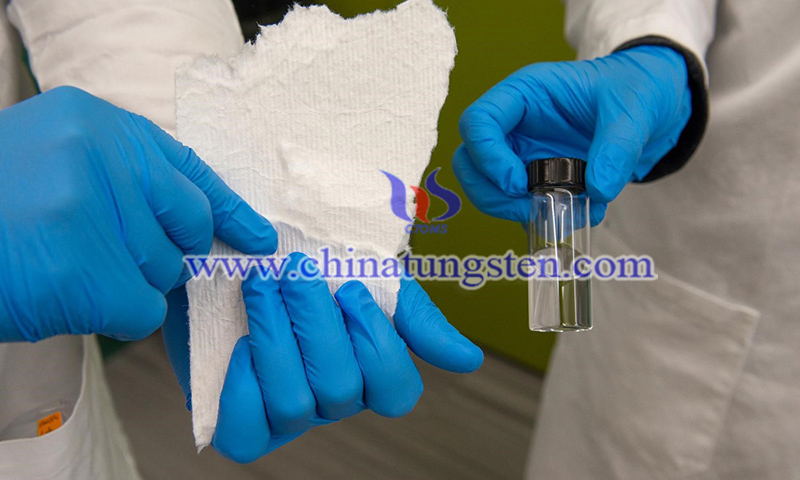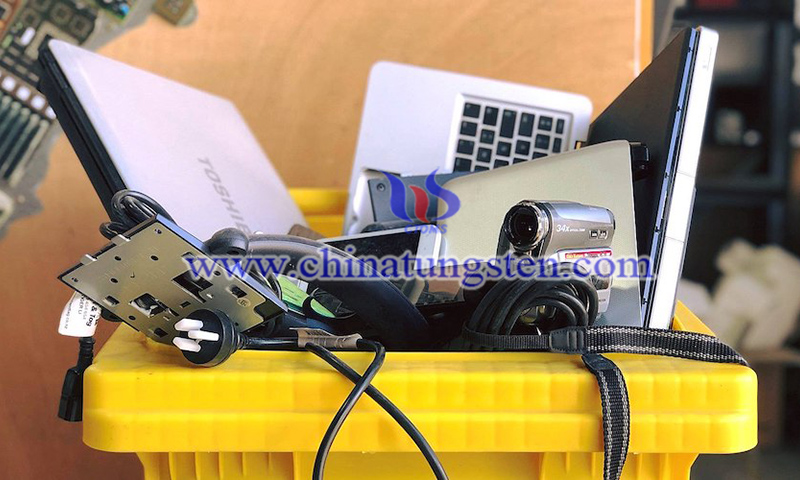Nanotechnology Helps Salvaging Rare Earth Elements from Electronic Waste
- Details
- Category: Tungsten's News
- Published on Monday, 06 December 2021 16:42
Amir Sheikhi, an assistant professor in the Department of Chemical Engineering at Penn State University, has discovered a new process for separating and recovering rare earth elements from electronic waste such as old computers and circuit boards using plant cellulose.
Manufacturers rely on rare earth elements like neodymium to make powerful magnets used in motors for electronics, including hybrid cars, aircraft generators, speakers, hard drives and in-ear headphones. However, deposits containing neodymium are relatively rare and are found in only a few locations around the globe.
With the increasing demand for neodymium in several industries, attention has turned to recycling elements found in old computers and printed circuit boards, known as e-waste, to meet the demand. But separating valuable elements from other minerals and components found in e-waste is proving to be a challenge.

In a recent paper published in the Chemical Engineering Journal, Amir Sheikhi, an assistant professor in the Department of Chemical Engineering and Biomedical Engineering at Pennsylvania State University, details a new nanotechnology for the separation of neodymium using plant cellulose, which is found in paper, cotton and pulp. patrictia Wamea is a former member of Sheikhi's lab.
To do this, the researchers negatively charged the hair layer of the nanoparticles in order to attract and bind to the positively charged neodymium ions, thus allowing the particles to aggregate into larger fragments that can then be effectively recycled and reused.
Current rare earth element recovery processes are harmful to the environment, Sheikhi said. They typically use highly acidic conditions to extract the elements in a chemical reaction. sheikhi's process is environmentally friendly because it uses cellulose, a cheap, renewable resource. Traditional mining processes are dangerous and expensive, and open-pit mining can have harmful effects on the environment.
"Using cellulose as a primary agent is a sustainable, cost-effective and clean solution," said Sheikhi. "Using this process, the U.S. will be able to compete with other giants, such as China, to recycle rare earth materials and produce them independently. China is a major exporter of neodymium, exporting more than 70 percent of the world's supply of the material.”

In addition to electronic waste, rare earth elements like neodymium can be extracted from industrial wastewater, mining tailings and permanent magnets that are no longer in use. Sheikhi says that in the future, he hopes that cellulose-based adsorption processes can be applied to these sources as well.
"This contribution to rare earth recycling will have a strategic and economically viable impact on several industries," Sheikhi said. "The more neodymium we recycle, the more we can make electric and hybrid vehicles and wind turbines, thereby reducing the pressure on the environment."
- Rare Earth Manufacturer & Supplier, Chinatungsten Online: www.chinatungsten.com
- Tungsten News & Prices of China Tungsten Industry Association: www.ctia.com.cn
- Molybdenum News & Price: news.molybdenum.com.cn
- Tel.: 86 592 5129696; Fax: 86 592 5129797; Email: sales@chinatungsten.com



 sales@chinatungsten.com
sales@chinatungsten.com